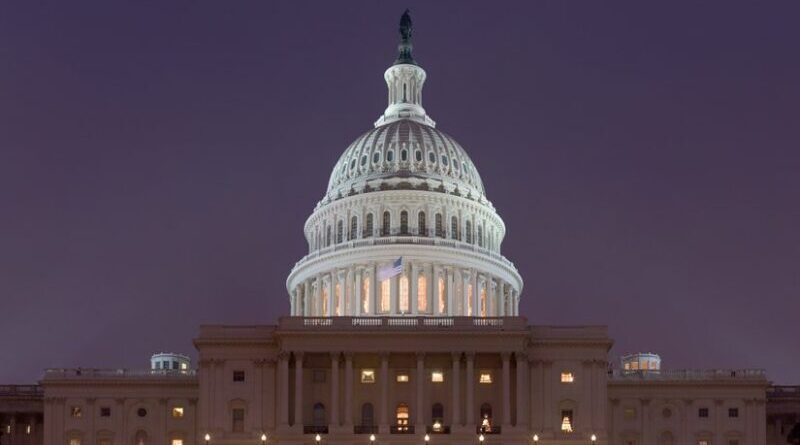Challenges Facing US Policymakers Today – Analysis
By Observer Research Foundation
By Akshobh Giridharadas
A few weeks from now, we will be welcoming 2019. And that means premature election fever in the United States with several candidates forming presidential exploratory committees to realistically assess their chances in 2020.
Since the end of the Cold War, foreign policy has traditionally taken a backseat in the primaries. The focus is skewed towards domestic issues with candidates contesting the amount of resources and spending that need to be devoted towards increasing prosperity and economic growth versus fulfilling social objectives and improving quality of life.
As a leading global superpower, America’s foreign policy and the liberal hegemonic outlook has long touted promoting prosperity across the globe. However, a wise man once stated that charity begins at home. Hence, it would be ironic for the US to remain a superpower echoing the terms of prosperity across the globe if its own backyard were to see more and more wilted roses.
Promoting prosperity is central to America’s long-term future. The US is the world’s leading superpower and boasts the world’s largest economy, a robust military presence and sophisticated technology but its secret sauce is the shared values and ideals of democracy, free speech, peace and prosperity that epitomises the American dream for its citizens and immigrants who choose to buy into this shared vision.
A strong economy has enabled US citizens to live more bountiful and secure lives, and it provided the foundation for a strong defence. Over the long-term, the US can only remain secure if it preserves the core elements of American power. That is a robust economy, an innovative private sector, world-class infrastructure, a government that encourages efficiency and promotes fair competition, and a well-educated population. Investments in each of these areas will yield invaluable long-term benefits and are essential to preserving America’s position as the leading global power.
When it comes to assessing some of the tensions facing American policymakers, some of the four key assessments they often grapple with include balancing efficiency vs equity or thinking about long term goals as opposed to short-term goals. Then there is a general interest vs particular specific interest and last but not least, there is the comfort of security & stability vs opting for dynamism & innovation.
When it comes to assessing some of the tensions facing American policymakers, some of the four key assessments they often grapple with include balancing efficiency vs equity or thinking about long term goals as opposed to short-term goals.
Then there is a general interest vs particular specific interest and last but not least, there is the comfort of security & stability vs opting for dynamism & innovation.
When it comes to the long-term vs the short-term conundrum, the question is, is it worth taking on short-term pains to reap the fruition of long-term gains? More often than not, policy makers make decisions thinking only about its immediate effect in the short run. This could be to appease the electoral multitude, or they lack the perspicacity to witness the long-term gains.
This is evinced when discussing the themes of research, development and innovation. America’s unarguable dominant position as the pioneer of cutting-edge technology was due to heavy investments in research towards technology and innovation. There was a unique trifecta of the government, universities and the private sector all cumulatively invested (figuratively and literally) in funding research to come up with the next generation of technology.
The short-term conundrum is obvious – why pay excessive greenback now towards research and technology that may not provide any tangible results? Could these funds not be allocated towards social welfare schemes such as Social Security and Medicare, that have direct short term and long-term benefits?
This further accentuates the second conundrum of security & stability as opposed to dynamism & innovation. Investing heavily in science and technology has enabled the US to consolidate its dominant position in the geopolitical scenario. Investment in space technology and NASA not only helped send the first human to the moon, but its geopolitical implications saw the Americans beat the Soviets in the space race. Silicon Valley is a dynamic place that is one of the last to see the light (sunrise) in the world, but one of the first places where new inventions see the light of day. It is ubiquitous with technology and is a place that epitomises innovation. Silicon Valley has helped California become the world’s fifth largest economy and contributed to the nation’s coffers.
Policymakers also tussle between general interest as opposed to specific interest. Technology and innovation would not have been possible without investing in quality primary, secondary and higher education.
The current discourse around education enlightened the perspective that future generations need to be prepared to face an ephemeral world with various global challenges. Subsidized quality public education works for the larger general interest. However, the more the populace that get quality education, the more the specific interest groups will acquire engineers, scientists, and technical specialists in STEM careers to pursue groundbreaking research and development (R&D).
Despite a perceived threat of losing its numero-uno position as the dominant economic powerhouse, the United States ‘still leads the world in the number of high-quality research and education facilities. This is the allure for the brightest prodigious talents from across the world that buy their share into the American Dream.
Investing in the next generation through education is not just a social must but has phenomenal economic importance and is a critical ingredient in sustaining long-term national strength.

